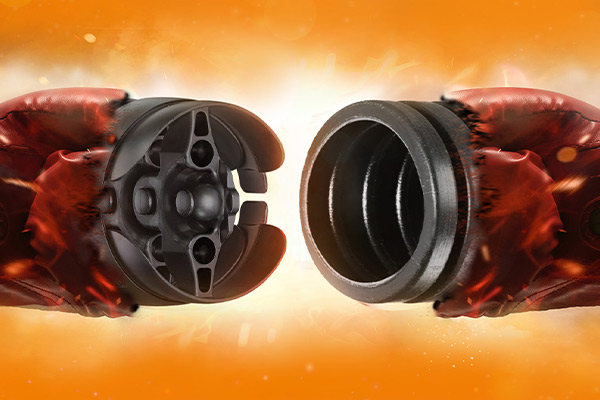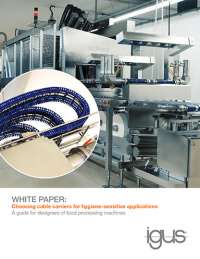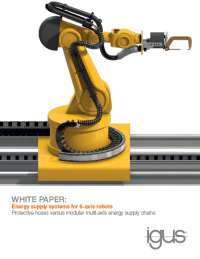All robotic arms need a quality cable management system if they're to avoid frequent downtime. Corrugated tubing is a popular choice, but there's a better option that will keep your cables running longer: triflex® R cable carriers from igus. Read on to find out how these two industry heavyweights match up head-to-head.
Round 1: Cable Installation
How can cables be installed?
Corrugated tubing
- Can only be installed via hose ends
- Cables with plugs that are too large can't be installed
triflex® R
- Can be pressed in externally
- Can install any cables, regardless of the plug size
Round 2: Replacement after damage
How can damaged areas be replaced/repaired?
Corrugated tubing
- Damaged areas cannot be repaired or replaced
triflex® R
- Damaged links can be removed and replaced with ease
Round 3: Tensile strain
How do the two products behave under tensile strain?
Corrugated tubing
- Stretches significantly
- Load is transferred to cables
triflex® R
- Minimal stretching
- No additional load for the cables
Round 4: Length Adjustments
What options are there for adjusting length?
Corrugated tubing
- Can only be shortened with cutting tools
- Cannot be lengthened
triflex® R
- Individual links can be removed and added with or without tools
Round 5: Torsion
What happens when torsional forces occur?
Corrugated tubing
- Little-to-no torsion occurs
- Cables can twist and abrade, leading to breakages
triflex® R
- 7-12.5° torsion angle per link
- Up to 900° torsion angle per meter
- Cables are protected from torsional forces
Round 6: Defined minimum bending radius
Is there a limit to the amount of bending possible? Will damage occur if the product is bent too far?
Corrugated tubing
- No minimum bend radius
- Hose and cables can be damaged during excessive movement
triflex® R
- Minimum bend radius of 50mm - 182mm
- Built in torsion-stops to prevent chain from bending too tightly
If you're interested in triflex® R as a cable management solution for your robotic applications and want to learn more, contact an expert today, or visit our triflex® R webpage!
Article topics
Email Sign Up




















